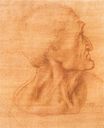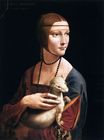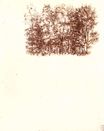Leonardo da Vinci - The Lady with an Ermine, Cecilia Gallerani 1496
 |
 |
 |
 |
 |
 |
 |

The Lady with an Ermine, Cecilia Gallerani 1496
53x39cm oil panel
Czartoryski Museum, Kraków, Poland
The image is only being used for informational and educational purposes
<< Previous G a l l e r y Next >>
From Wikipedia, the free encyclopedia:
The small portrait generally called The Lady with the Ermine was painted in oils on wooden panel. At the time of its painting, the medium of oil paint was relatively new to Italy, having been introduced in the 1470s.
The subject has been identified with reasonable certainty as Cecilia Gallerani, who was the mistress of Leonardo's employer, Ludovico Sforza.
Cecilia Gallerani was a member of a large family that was neither wealthy nor noble. Her father served for a time at the Duke's court. At the time her portrait was painted, she was about 16 years old and was renowned for her beauty, her scholarship, and her poetry. She was married at approximately age six to a young nobleman of the house of Visconti, but she sued to annul the marriage in 1487 for undisclosed reasons and the request was granted. Cecilia became the mistress of the Duke and bore him a son, even after his marriage to another woman 11 years previously, Beatrice d'Este. Beatrice was promised to the Duke when she was only 5, and married him when she was 16 in 1491. After a few months, she discovered the Duke was still seeing Cecilla, and forced the Duke to break off their relationship by marrying her off to a local count named Bergamino.
The painting shows a half-length figure, the body of a woman turned at a three-quarter angle toward her right, but her face turned toward her left. Her gaze is directed neither straight ahead, nor toward the viewer, but toward a "third party" beyond the picture's frame. In her arms, Gallerani holds a small white-coated stoat, known as an ermine. Gallerani's dress is comparatively simple, revealing that she is not a noblewoman. Her coiffure, known as a coazone, confines her hair smoothly to her head with two bands of hair bound on either side of her face and a long plait at the back. Her hair is held in place by a fine gauze veil with a woven border of gold-wound threads, a black band, and a sheath over the plait.